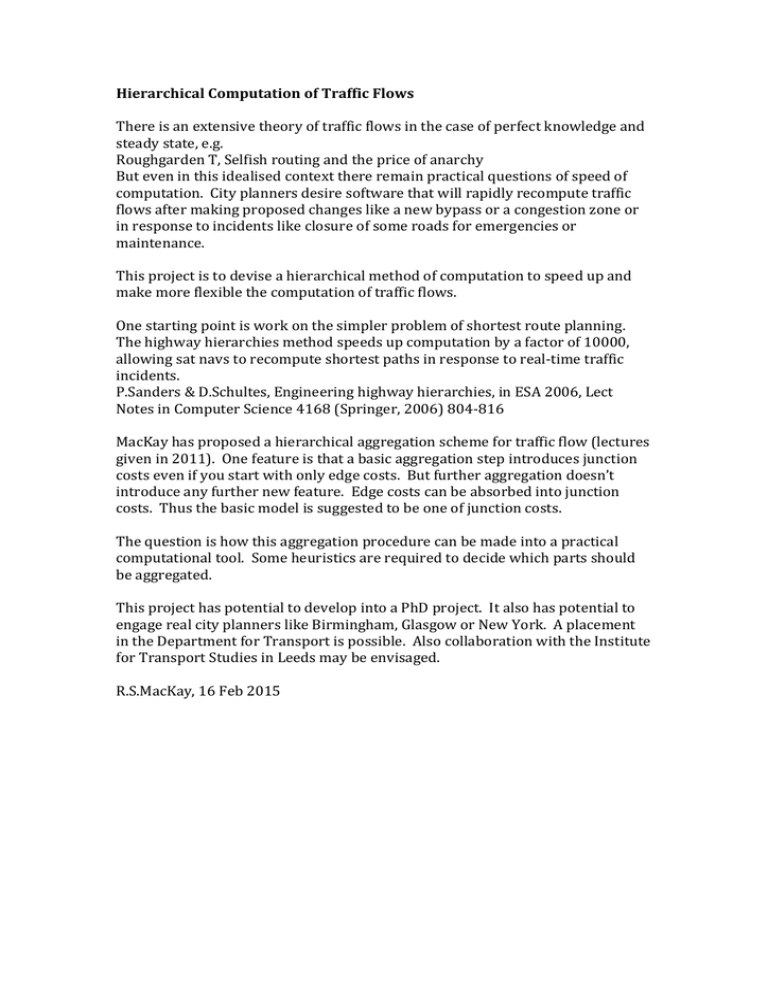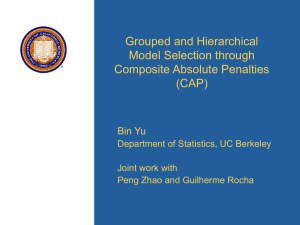Document 13330185
advertisement

Hierarchical Computation of Traffic Flows There is an extensive theory of traffic flows in the case of perfect knowledge and steady state, e.g. Roughgarden T, Selfish routing and the price of anarchy But even in this idealised context there remain practical questions of speed of computation. City planners desire software that will rapidly recompute traffic flows after making proposed changes like a new bypass or a congestion zone or in response to incidents like closure of some roads for emergencies or maintenance. This project is to devise a hierarchical method of computation to speed up and make more flexible the computation of traffic flows. One starting point is work on the simpler problem of shortest route planning. The highway hierarchies method speeds up computation by a factor of 10000, allowing sat navs to recompute shortest paths in response to real-­‐time traffic incidents. P.Sanders & D.Schultes, Engineering highway hierarchies, in ESA 2006, Lect Notes in Computer Science 4168 (Springer, 2006) 804-­‐816 MacKay has proposed a hierarchical aggregation scheme for traffic flow (lectures given in 2011). One feature is that a basic aggregation step introduces junction costs even if you start with only edge costs. But further aggregation doesn’t introduce any further new feature. Edge costs can be absorbed into junction costs. Thus the basic model is suggested to be one of junction costs. The question is how this aggregation procedure can be made into a practical computational tool. Some heuristics are required to decide which parts should be aggregated. This project has potential to develop into a PhD project. It also has potential to engage real city planners like Birmingham, Glasgow or New York. A placement in the Department for Transport is possible. Also collaboration with the Institute for Transport Studies in Leeds may be envisaged. R.S.MacKay, 16 Feb 2015




